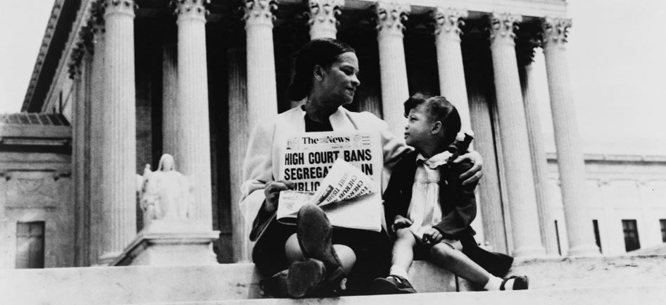LAD #39: Brown V. Board of Education
Little Linda Brown, a young black girl living in Topeka, Kansas, was forced to walk a mile to school through a railroad yard, while a segregated white school only blocks away. Her father appealed to the local NAACP, who used the opportunity to challenge the segregation of public schools in Topeka. Brown and the NAACP appealed to the Supreme Court in 1951, and the case was combined with others challenging public school segregation from around the nation. The Supreme Court heard the case in 1952 and 1953, but were unable to reach final decisions. Finally, on May 17, 1954, Chief Justice Earl Warren read the unanimous decision of the judges, which stated that the segregation of children based on race deprives the minority group of equal educational opportunities. Thus, the "separate but equal" ruling in Plessy vs. Ferguson was overturned, and it was decreed that the plaintiffs in the case were being deprived of equal protection of the law under the Fourteenth Amendment.
Thus, the desegregation of schools across America was ordered. However, although this was an enormous step, school desegregation was still a long ways off. The case did not abolish segregation in public facilities either. However, it did set a precedent that paved the way for integration and the civil rights movement.


The Brown v. Board of Education case reminded me of the recent case of Obergefell v. Hodges case which was a major gay rights victory, making gay marriage legal.


No comments:
Post a Comment